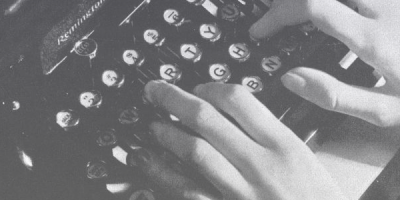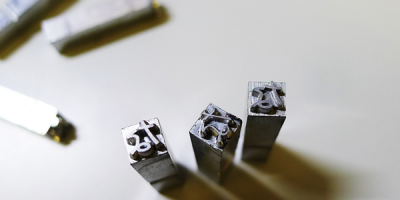
Previously, we looked at calligraphy, writing, and artwork as examples of behavioral traces from which one can perceive character (see parts 39 and 40), but these are not the only places where one can find character. Not infrequently, character resides in the goods and supplies we use every day without thinking of it.
A chewed-on pencil. A spotless pair of glasses. A rumpled pair of pajamas, like a cast-off skin. A Web browser with a history cache full of dubious Web sites. These things tell us about the actions of their owner, and as a result eloquently speak of the owner’s “humanity,” that is to say his character. (Come to mention it, once I lent my electronic dictionary to a random student, who immediately started going through my search history. I nearly had a heart attack.)
We often perform this sort of profiling in our daily lives, and all without resorting to the expert opinions of specialists or deductions of great detectives. “This thing is thus and so, so it probably works like this.” “Yes, yes, like this.” “I see, I see!” and so on.
There was a wrestling magazine called Gekkan Puroresu (Pro Wrestling Monthly) published by Baseball Magazine Co. Ltd. It featured a section called “Reader’s Ring,” where letters from the readers were printed. This section was always full of letters brimming with love and passion for professional wrestling. In particular, the questionnaire requests were incredible. Readers would conduct surveys aimed at other readers through their letters. For example, a reader would ask: “Please help me with this survey. (1) Favorite wrestler (2) Favorite troupe (3) Least favorite troupe (4) Favorite referee.”
Although you might wonder who on earth would respond to such questions, the statistical results of these surveys were featured quite regularly. “Thank you to the 327 people who responded. The answers break down as follows…” While the above is in fact close to my own childhood, I should disclose that I am tracing the contours of “327-tsuu 5-funkan no Kodoku na ‘Netchuu Jidai’”(1) (1979) by Makoto Shiina(2).
The kind of person who would not mind (rather would be zealous for) spending the five minutes to address a postcard and write down the questionnaire and their answers, cannot be said to merely “like professional wrestling.” What kind of people were these? According to Shiina, one such person might be as follows:
He is an accountant who has worked for 27 years at a delivery company with 17 employees and about 7 million yen in capital, located near a canal in Taitou ward. He has two people under him. He is basically the silent type. He refers to himself as “atashi.”(3) At home, he drinks a leftover Kirin New Year’s Label beer, reads the evening edition, and watches News Center 9 on NHK. His 23 year-old daughter, who will get married next year, asks him to pass the soy sauce. He coughs dryly and passes it over. And his favorite wrestler is Rusher Kimura.(4) But not Rusher Kimura in his later years, after he got his big break on the All Japan Pro-Wrestling circuit following the “Good Evening Incident”(5) in the New Japan Pro-Wrestling company. He likes the Rusher Kimura who was a simple, minor wrestler in the International Wrestling Enterprise, and he writes “Rusher Kimura” on the postcard in his remarkable block letters. This is the kind of person he is.
Here, the action of “responding to a questionnaire organized by a reader of a wrestling magazine” provides us the hint, leading perfectly, via a well-controlled fleshing-out process, to an image of a proper (quiet) Japanese “dad.” Although I think this logic is perfect, it reflects a former era and today’s younger readers may find it doesn’t click with them, but this kind of character ebb and flow is unavoidable. Characters lead the era, eras lead the characters.
I guess this is no time to be talking about daily goods. “‘Country folks’ are a pain because they’re like that;” “My natural enemy is the ‘type B personality;’” “No, I’m a ‘Scorpio woman.’” And so on. Character does not reside in behavior and the traces of behavior. Character resides in everything.
As I was writing this, I realized that as this column is titled An Unofficial Guide for Japanese Characters and is published on the Web site of Sanseido, a company that makes dictionaries, I might be expected to talk more about discrepancies in Japanese society as seen from language. Leaving aside our discussion of everything under the sun, we will return to the problem of language.
* * *









(1) Roughly translated: My 327-Letter 5-Minute Solitary ‘Age of Passion’
(2) 1944– Japanese writer of novels and essay.
(3) One of the many versions of the pronoun “I” in Japanese. For descriptions of others, see footnotes in parts 11 and 21.
(4) 1941– Japanese professional wrestler. He began his career in 1965.
(5) An incident in which Rassha Kimura flabbergasted a particularly hostile audience by getting on the microphone and politely saying “Good evening.”